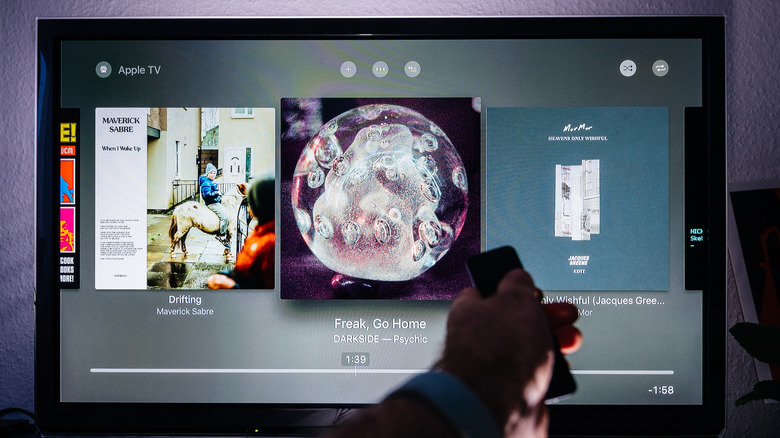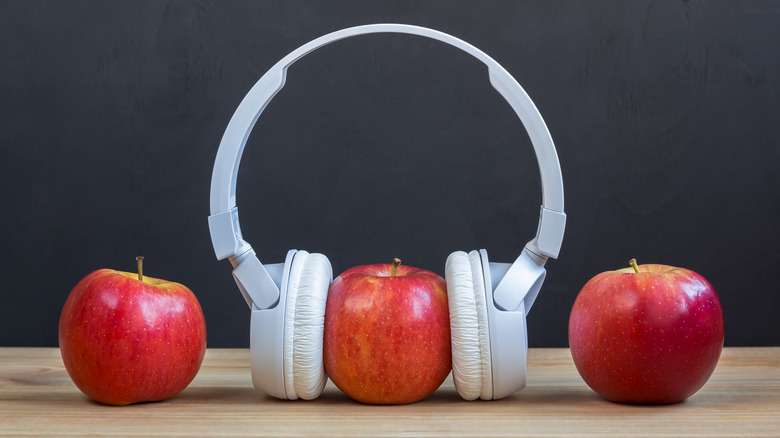The Reason Apple Never Added A Radio Tuner App Like Android
Why don't iPhones play the radio? It's a simple question with a surprisingly complex answer.
By itself, including radio functionality in a consumer electronics device seems like a simple choice. As befits a technology over a hundred years old (via PBS), engineers have gotten radio transmission down to an art. Tuners are neither expensive nor labor-intensive to install. Radio's market share, however, has unquestionably dropped in the past few decades. Still, per Pew Research, 83% of Americans over age 12 listened to the radio on at least a weekly basis as of 2020. That's a lot of potential listeners. Why exclude them?
The answer to that question, as with so many Apple mysteries, is one part engineering to two parts business culture. It comes down to what the iPhone is built to do, not just in terms of its technical components, but the role Apple wants it to play in users' daily lives.
Digitization and its discontents
As Apple Explained ... well, explains, in an enlightening 2 minute video, iPhones were actually included FM tuners prior to the iPhone 7. At the time, Apple sourced their wireless/Bluetooth chipset from Broadcom. At the time, Broadcom included a radio tuner. It fell to Apple to add a simple circuitry upgrade that would have made the tuner functional on iOS.
This, they did not do. Per Apple Explained, the decision not to include a radio tuner app in earlier iPhones and to nix the radio transmitter entirely in later builds had less to do with engineering than, for lack of a better word, vibes. Terrestrial radio is old technology: local, range-limited, with varying degrees of quality control. That's not the Apple offer. Apple works hard to deliver a smooth, seamless, futuristic user experience with minimal customer intervention and maximum stability across models and borders. Radio couldn't live up to that, so it had no place on iOS.

